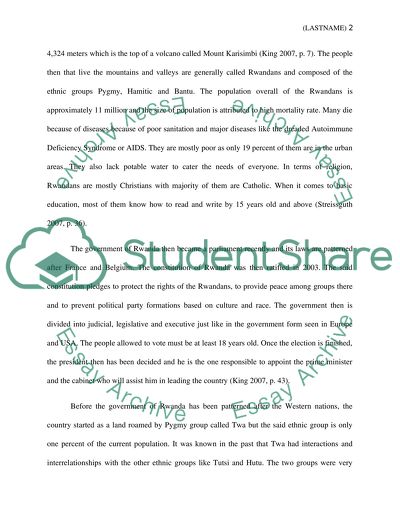Cite this document
(“History - Rwanda Genocide Research Paper Example | Topics and Well Written Essays - 1500 words”, n.d.)
Retrieved from https://studentshare.org/history/1451101-rwanda-genocide
Retrieved from https://studentshare.org/history/1451101-rwanda-genocide
(History - Rwanda Genocide Research Paper Example | Topics and Well Written Essays - 1500 Words)
https://studentshare.org/history/1451101-rwanda-genocide.
https://studentshare.org/history/1451101-rwanda-genocide.
“History - Rwanda Genocide Research Paper Example | Topics and Well Written Essays - 1500 Words”, n.d. https://studentshare.org/history/1451101-rwanda-genocide.


